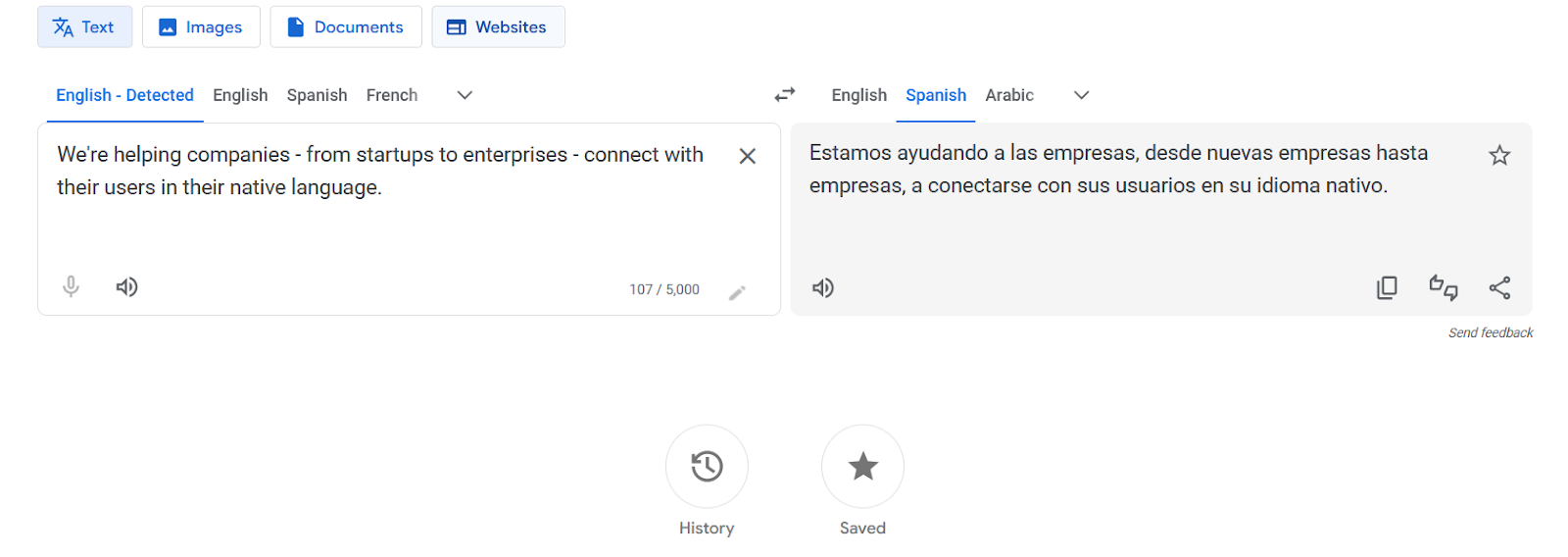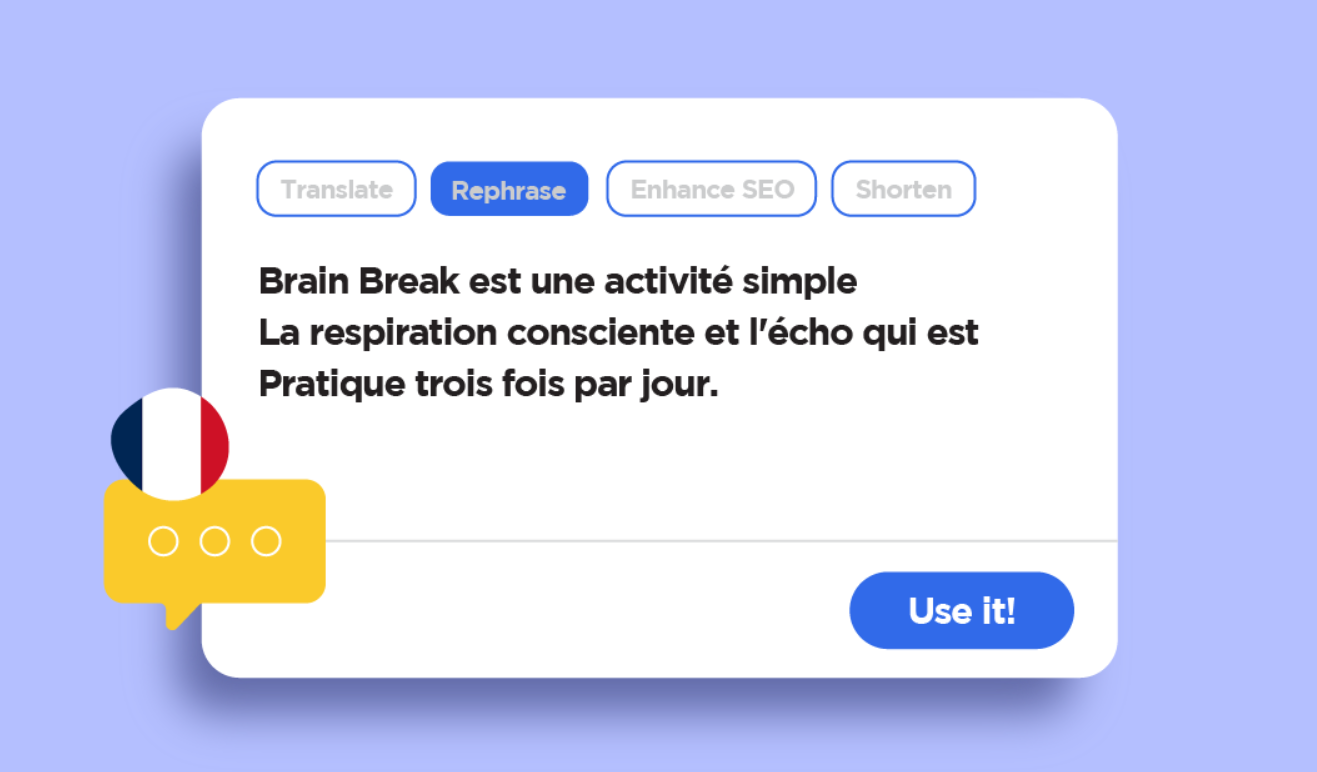Are you planning to translate your website as part of your localization strategy? Then, you probably wonder about the typical website translation costs. It’s important also to consider that the localization and translation of a site can depend on many factors, including speed and complexity.
Although translating your website to multiple languages may sound complex or pricey, there are several options to consider and localization paths to follow.
In this article, we share everything you need to know about website translation and localization costs, including what to expect based on the different methods you can leverage.
Let’s dive in!
Why do you need to translate your website?
Let’s start from the basics: Why should you translate your website?
Well, you might need to translate your website if you don’t speak the language of your target audience. That means you should translate the entire content of your website into the target language to engage and attract potential customers worldwide.
A multilingual website can help you expand in foreign markets, as your messaging will be adjusted to resonate with foreign audiences. This can make your website more accessible and increase international traffic and, therefore, conversions.
To plan your website translation budget effectively, first, you need to understand the available methods and tools and the impact each one can have on your localization costs.
What is the cost of website translation?
Website translation cost depends on several factors, including the number of website pages and words and the time required to translate the entire website content.
Also, the cost varies depending on the translation method you choose. For example, machine translation is cheaper than human translation.
On the other hand, human translation is more accurate than machine translation. Human translators usually charge a $0.10-$0.30 per word rate, while many machine translation tools, like Google Translate, are free.
Combining human and machine translation has been the most commonly used approach for the past decades. However, with the rise of AI technology and platforms like Transifex, human intervention in localization is being minimized even further while translation quality reaches human levels.
By removing the human-in-the-loop, AI-powered localization supercharges how you create a multilingual website that resonates with your target audience!
What translation methods to use and what costs to expect
Before you can effectively plan your website translation budget, it’s important to understand the various methods and tools available and how each one can impact your localization costs.
Let’s explore all the options:
#1 Machine translation (MT)
Machine translation is one of the most commonly used free translation methods. Although this method was initially inaccurate, it has become more precise as time passes and technology evolves.
An example of a machine translation tool is Google Translate, which you can use to translate text into almost every language. However, the result is often low-quality and not adjusted to each language’s cultural nuances.
The advantages of MT:
- Low-cost or free with Google Translate
- Allows you to translate a large number of words or web pages fast
- Accurate for straightforward translations
- Its cost usually depends on the number of words translated (word count)
- Easy to use
The disadvantages of MT:
- Translations are not context-aware, leading to inaccuracies and errors
- You have no control over how the text will be displayed on the website
- It takes much time to proofread and edit the translated text
- Cultural differences aren’t considered
- The translated content is not SEO optimized, meaning it is not crafted to rank high in search engines
- Idioms, jokes, and expressions aren’t translated properly by Google Translate or other automated translation tools
#2 Manual translation
The manual translation is the most straightforward translation method. But what is manual translation?
Manual translation means that you or a teammate translate your website’s content by hand, provided you have deep knowledge of the source and the target language.
The advantages of manual translation:
- Straightforward method
- High translation quality
- Low translation costs or completely free
- You have total control over the process and the outcome
- A good option for websites with a small number of pages
The disadvantages of manual translation:
- Time-consuming
- Difficult to manage for large content volumes
- Inconsistent messaging if multiple translators are involved
- Whoever does the website translation needs to be a native speaker of the target language or have to speak the target language fluently
- There is a restriction regarding the number of languages you can translate your website into
#3 Professional translation
Professional translation is another human translation method you can use to translate your website into multiple languages.
Contrary to the methods mentioned above, professional website translation requires a professional translation service provider, like professional translators or translation agencies.
Due to the human factor and the translator’s experience, this method is more accurate than others but also more costly.
Specifically, a professional translator can charge between $20 and $70 per hour. This means that the larger the number of your website’s pages, the higher the cost of your website translation project.
The advantages of professional translation:
- Highly accurate method for specialized translations (legal, transcreation, etc.)
- Professional translators consider the target language’s cultural nuances and grammatical structures
- The translated content is often high-quality
The disadvantages of professional translation:
- High translation costs
- Inconsistent messaging if multiple vendors are involved
- You need to ensure you pick an experienced and skilled professional translator or translation agency
- The translator needs to be onboarded onto your product and brand
- Human post-editing is often required
- Time-consuming and slow method
- Can be difficult to manage for large volumes and multiple languages
#4 Hybrid translation (Human and Automatic translation)
Hybrid translation combines human and machine translation, allowing you to get the best of both worlds in your website localization efforts.
This translation method combines the benefits of human and automated translation while minimizing the disadvantages.
The philosophy behind hybrid translation is that the text is initially translated using translation software and then post-edited by a professional translator or a translation agency.
The human translator will still charge $20-$70 per hour, but their work hours will be significantly less than in professional translation.
That means hybrid website translation is cheaper than professional translation. However, the final cost depends on the number of web pages that need to be translated.
The advantages of hybrid translation:
- Accurate translation method
- High-quality translations
- The human translator adjusts the text to match the target language’s grammatical structure and cultural nuances
- The content is SEO-optimized
- Faster than manual translation and professional translation
- Cheaper than a professional translation
- The text can be translated into numerous language pairs for a multilingual website
The disadvantages of hybrid translation:
- More expensive than machine translation
- The translated content needs to be reviewed and post-edited
- The assistance of professional human translators is needed
- The translation process is slower than in machine translation
#5 AI-driven translation and Quality Assurance (QA)
AI-driven translation is a great way to boost your localization efforts with the help of translation software.
It helps you automate the entire translation process for your website by minimizing human intervention and dependency.
Unlike machine translation, AI-driven translation can adjust to cultural nuances and translate the text to resonate with foreign target audiences.
At the same time, quality assurance (QA) and post-editing AI-driven processes ensure the translated text’s quality without any manual effort.
The advantages of AI-driven translation with QA:
- Extremely accurate and contextual translations
- Faster translation process
- Helps maintain brand identity through integrated glossaries and style guides
- Multilingual SEO-optimized content
- Lower cost of website translation than most other methods
- Easy to scale
The disadvantages of AI-driven translation with QA:
- The output level depends on the provided training data
How can Transifex help you reduce your website translation cost?
At Transifex, we fully understand how challenging it can be to balance quality and cost in website translation. That’s why we’ve designed our AI-powered platform and robust automations to help you maximize the impact of your localization spend.
Choose the best translation method based on your content’s needs and create human-quality content in your brand’s voice at a fraction of traditional translation costs with Transifex AI.
Are you ready to turn localization into a powerful revenue driver?
Sign up for a free trial today and expand globally with the power of AI.
FAQs
How are website translation costs estimated?
The cost of translating a website into one or more languages is estimated based on the time, language, and expertise requirements, the number of words (word count), and the number of translated pages.
Usually, translators charge based on word count or hourly rates.
What is the website translation process?
The website translation process is the process of translating your website content from one language to another. This can be done by:
- Translation companies or language service providers
- Professional or freelance translators
- AI translation tools
- Translation software
- A combination of all the above
How much does a page translation cost?
The cost of a page translation depends mainly on the language. Some language pairs are more expensive than others.
For example, complex languages, like Norwegian, cost more than simpler languages, like Spanish. Generally, an average 250-word translated page costs around US $25- US $75.
How much should I pay for a translator?
A translator is usually paid per word or hour. The average hourly rate for professional translators is around $20-$70.
Is it hard to translate a website?
Translating a website from one language to another requires a deep understanding of the source and target language’s grammar, structure, and cultural nuances.
That often makes website localization challenging, as machine translation alone doesn’t suffice.
A combination of machine, human, and AI translation is the best way to create a fully translated website that preserves the brand’s messaging and resonates with the target audience!
What is translation memory?
Translation memory (TM) is a database where the sentences and paragraphs of a translated text are stored.
All the entries include the source (original) language text and the target (translated) language in the form of sentence pairs.
This technology can help a website’s localization process and speed up translation while reducing costs.
How much does a 1000-word translation cost?
A 1000-word translation costs around $60-$100, but this rate doesn’t include proofreading or post-editing.













